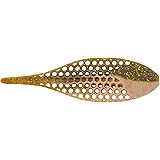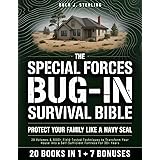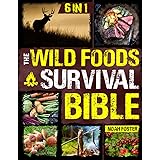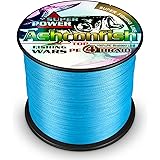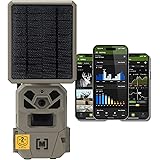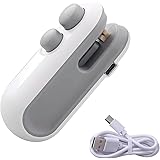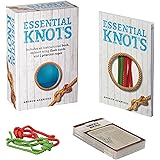The notion of facing a significant medical crisis without immediate access to modern healthcare facilities can be a daunting prospect for many. While most medical guides focus on getting a patient to a hospital, a different approach is necessary when that critical option is simply not available. The video above, an audiobook preview of The Ultimate Survival Medicine Guide: Emergency Preparedness for Any Disaster by Joseph Alton MD and Amy Alton ARNP, introduces this crucial concept: becoming the ultimate Survival Medic for your family and community.
This comprehensive guide delves into the essential knowledge and supplies required when modern medicine becomes a luxury. It explores a scenario where individuals are no longer able to “pass the buck” to professional medical teams, but instead must become the primary source of medical care. This shift in mindset from rescue to self-reliance is the cornerstone of true emergency preparedness.
Navigating Medical Care in Austere Environments: The Core Challenge
Typically, in outdoor or remote medical emergencies, the objective is straightforward: stabilize the patient and transport them to the nearest advanced medical facility. This logical sequence relies on the presumption that professional help, advanced technology, and extensive supplies are ultimately available. However, various long-term scenarios, such as a widespread pandemic, civil unrest, or a major terrorist event, could fundamentally alter this reality.
In such a “collapse” scenario, the risk of illness and injury can significantly increase, yet the hope of obtaining advanced care diminishes to near zero. It becomes evident that help might truly not be on the way. Therefore, the tremendous burden of medical responsibility often falls squarely on individuals and families, making a detailed survival medicine guide indispensable for long-term health and well-being.
1. Understanding the Shift from Wilderness First Aid to Survival Medicine
Conventional outdoor medicine is usually concerned with short-term emergencies, where the goal is simply to bridge the gap until professional help arrives. The strategies employed are generally temporary, designed to maintain life and prevent further injury during transport. This approach assumes a functioning infrastructure where hospitals and emergency services are accessible and operational.
Survival medicine, conversely, is tailored for scenarios where modern medical infrastructure is severely compromised or entirely absent for an extended period. It demands a different skill set, a wider array of supplies, and a mindset focused on long-term care and improvisation. For instance, a broken leg may not be treated with the expectation of an orthopedic surgeon but rather with the best available improvised splint, aiming for healing in austere conditions.
2. Essential Medical Skills for the Aspiring Survival Medic
Becoming a competent Survival Medic requires the acquisition of a broad range of medical skills. While formal medical training such as EMT courses are beneficial, many will find Red Cross First Responder or Community Emergency Response Team (CERT) courses to be a more accessible starting point, typically requiring 40 to 80 hours of instruction. These foundational programs provide invaluable knowledge, even if their ultimate goal is still patient transport.
Key skills that should be learned include:
- Vital Sign Assessment: Accurately taking pulses, respiration rates, and blood pressures is fundamental to patient evaluation.
- Wound Management: This involves cleaning and monitoring open wounds, knowing when to close them (or, more importantly, when *not* to), and applying appropriate dressings.
- Trauma Care: Learning to stabilize injuries like ankle sprains, dislocations, and fractures with proper splinting and padding is critical.
- Burn Treatment: Recognizing and treating varying degrees of burns, from minor to severe, is a vital skill.
- Infectious Disease Identification and Treatment: This encompasses bacterial infections like strep throat, viral illnesses like influenza, and parasitic conditions such as giardiasis. Understanding how to manage common infections like urinary tract infections or pinkeye is also crucial.
- Allergic Reactions: Knowing how to identify and treat both minor allergic reactions and life-threatening anaphylactic shock is essential.
- Dental Care: Basic dental skills such as treating toothaches, replacing fillings, managing abscesses, and performing extractions can prevent severe suffering in a long-term scenario.
- Obstetrics: For women’s issues, knowing how to assist in a normal baby delivery and manage the placenta could be lifesaving.
- Preventive Medicine: Perhaps the most important skill is learning how to prevent injuries and illnesses by ensuring proper attire, hygiene, and recognizing environmental risks.
3. Assembling Your Emergency Medical Kit: Beyond the Basic First Aid
While a basic first aid kit is suitable for minor scrapes, a true survival medicine guide emphasizes the need for serious medical stockpiles. These kits are typically categorized into three levels, each designed for increasing levels of medical self-reliance and disaster scenarios.
a. The Individual First Aid Kit (IFAK)
This lightweight, personal carry kit is intended for individual use, enabling treatment of common problems encountered during travel or in the wilderness. It is often carried by every member of a group. Essential items might include an Israeli bandage, a tourniquet, hemostatic agents like Celox, adhesive bandages, and basic antiseptic wipes. The focus here is on immediate, life-saving intervention and managing common minor injuries.
b. The Family Medical Kit
Considered the minimum equipment for a household head in a long-term survival situation, the family kit is mobile, fitting into a standard large backpack. It expands significantly on the IFAK, incorporating items like a first aid reference book, antibacterial soap, various sterile and non-sterile dressings, moldable splints, and diagnostic tools such as a stethoscope and blood pressure cuff. Pharmaceuticals like acetaminophen, ibuprofen, and antihistamines are also critical components.
c. The Community Clinic Kit
Representing a field hospital’s equivalent, this kit is designed for a skilled medic providing long-term care for an entire survival family or group. It includes a vast volume of supplies and advanced equipment, such as suture kits, scalpels, chest seals, and a wider range of medications. While daunting to assemble alone, the responsibility for such a comprehensive kit can be shared among a group, coordinating efforts to stockpile under the medic’s guidance.
4. The Importance of Cleanliness and Sterilization in Survival Settings
In any medical scenario, the level of cleanliness of equipment is paramount, but particularly so in austere environments where infections can be catastrophic. The distinction between “sterile” and “clean” is a core tenet of effective disaster medical care.
1. **Sterile:** This implies the complete absence of microorganisms, achieved through methods like using an autoclave (a type of pressure cooker) for instruments and dressings. Maintaining a sterile field is challenging outside of modern facilities but is the ideal for any invasive procedure. Having a pressure cooker available can allow instruments to approach this level of sterility.
2. **Clean:** When true sterility is unattainable, the goal is to keep things “clean” by significantly reducing the number of microorganisms. This is achieved through thorough handwashing with soap and hot water, and the use of disinfectants on non-living surfaces. Bleach, for example, is a common disinfectant.
3. **Disinfectants vs. Antiseptics vs. Antibiotics:** It is crucial to understand these differences. Disinfectants kill microbes on non-living objects, while antiseptics (like Betadine or Hibiclens) kill microbes on living tissue. Antibiotics (such as amoxicillin or doxycycline) are medications that destroy microorganisms *inside* the human body, combating internal infections.
5. Tailoring Your Preparedness to Specific Needs and Environments
Effective emergency preparedness is not a one-size-fits-all endeavor; it must be customized to the unique needs of your group and your environment. Several factors need to be carefully considered when developing your medical plan and stockpiling supplies.
a. Special Needs Within Your Group
The medical needs of children, the elderly, or individuals with chronic conditions (e.g., asthma, diabetes) differ significantly from those of an average adult. Women may also have specific health concerns, including pregnancy and birth control. It is imperative to identify these special needs within your group and encourage members to stockpile their routine medications, perhaps by discussing emergency prescriptions with their physicians in advance.
b. Environmental Considerations
The physical environment in which you anticipate living will directly influence your medical preparations. A cold climate necessitates knowledge of hypothermia treatment and strategies for warmth, while a hot climate requires understanding heatstroke prevention and treatment. Wet, humid environments demand strategies to keep people dry and prevent related health issues, whereas dry, desert-like conditions emphasize the importance of water purification and hydration strategies. These factors should even influence location choices if a collapse is imminent.
c. Duration of Self-Sufficiency
The expected duration for which you will be the sole medical resource significantly impacts the scope of your preparations. Short-term catastrophes, like severe damage from a hurricane, might limit medical access for weeks. Long-term events, however, necessitate a much larger and more varied stockpile, planning for issues that might arise months or even years down the road, such as ongoing birth control needs or chronic disease management. This extended timeframe necessitates a truly robust survival medicine guide.
6. Sourcing Medical Information and Training
To become an effective healthcare provider in a long-term scenario, continuous learning is paramount. A robust library of printed medical, dental, survival, and nutritional books is invaluable, particularly when internet access is unavailable. Resources like the Physician’s Desk Reference (PDR) offer comprehensive drug information.
While online sources such as YouTube can provide visual demonstrations for skills like suturing or splinting, hard copies of information are irreplaceable off-grid. Practical training can be obtained through local Red Cross or CERT courses, and even by volunteering at an emergency room, which offers exposure to real-time medical situations and helps desensitize individuals to injuries.
7. Embracing Integrated Medicine and Realistic Expectations
The Ultimate Survival Medicine Guide advocates for an integrated medicine approach, utilizing both conventional and alternative healing methods when supplies are limited. The philosophy that “something is better than nothing” is a guiding principle in these situations. It is also realistic, not claiming to cure problems that only modern technology can address, such as reattaching an amputated limb or performing cardiac bypass surgery.
Instead, the focus is on survivable medical issues you would encounter in an austere setting, equipping you with the tools to make choices that increase the chances of successfully treating injuries and diseases. Ultimately, becoming medically prepared means learning to think critically about what to do when you become the end of the line for your family’s medical well-being, fostering a proactive approach to emergency preparedness.


